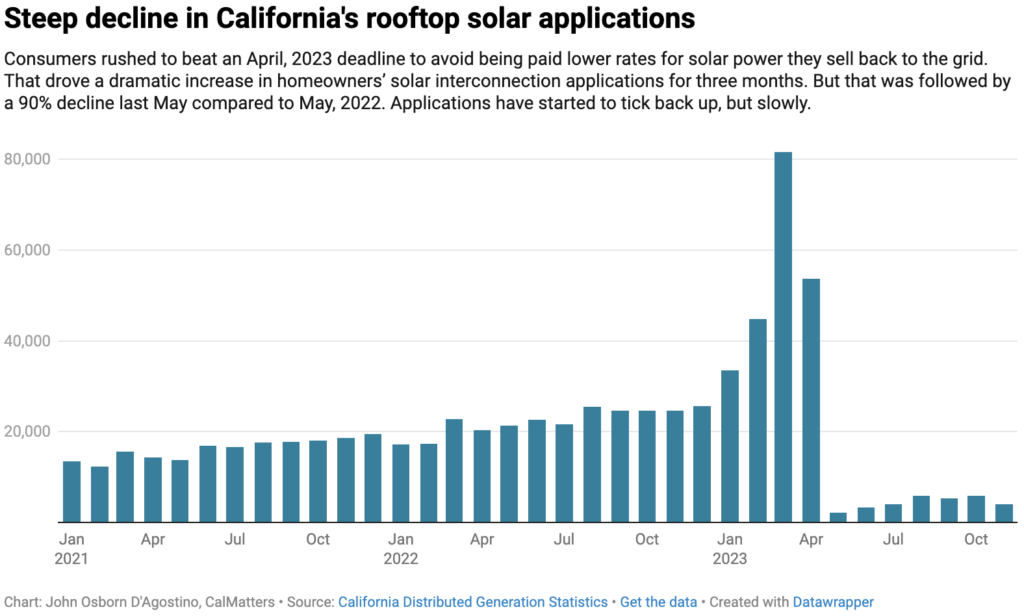Californians rush to take advantage of expiring solar subsidies at expense of low-income
In California, high-income residents with rooftop solar installations used the state’s lucrative solar subsidies to redistribute an estimated $3.37 billion in 2021 from lower-income families that cannot afford them.
They did this through a program called net-metering, which allows solar owners to sell excess generation back into the market at full retail price when their solar panels are producing a lot of electricity.
Homeowners selling excess solar back to the grid should be getting paid only for the costs they displace — which is the fuel expense the grid didn’t have to incur because of the solar generation. These fuel expenses are a relatively small portion of the cost of operating and maintaining the grid, which also includes expenses for labor, transmission, distribution, maintenance, and more.
However, solar owners in California and elsewhere were getting paid the full retail price of electricity, meaning they weren’t paying for the cost of using the grids’ distribution and maintenance system. These costs don’t just go away – they get pushed onto low-income households who are effectively forced to subsidize wealthy homeowners who can afford solar installations.
As my colleague Isaac Orr explained in 2020:
At its core, net metering pays people with solar panels more for their electricity than it is worth. This is accomplished by paying people with solar panels the retail rate for their power, rather than the wholesale rate. In fact, this is the only reason that solar panels are able to “pay for themselves.”
The California Public Utilities Commission (PUC) recently changed these net metering payments — dropping the payments by “at least” 75 percent — and the industry in the state took a nosedive as a result. These changes took effect in April 2023, and, as you can see from the graph below from CalMatters, affluent homeowners rushed to beat the deadline. After it passed, installations plummeted, and in May installations were down 90 percent from the year before.

Around 17,000 workers in the California solar industry have been laid off, with some companies having to shut down completely. As reported by CalMatters:
The new rule’s impact on the solar industry has been immediate. As many as 17,000 solar workers in California might have lost their jobs by the end of last year, according to industry estimates.
“The market is in the gutter,” said Bernadette Del Chiaro, executive director of the California Solar & Storage Association, an industry group. “It should be no surprise to anybody. If you are a business and your market took a 80% nosedive, with great pain you have to lay off. Some companies shut their doors.
“We are talking about the largest solar market in the country,” she said. “This was the most impactful energy decision, easily, for this century so far.”
This is the natural result for an industry that was propped up by ill-advised energy subsidies that grossly overpaid solar owners for the value the grid received in return.
In the words of Thomas Sowell, “Socialism in general has a record of failure so blatant that only an intellectual could ignore or evade it.” This is just the latest example.